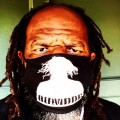With our free press under threat and federal funding for public media gone, your support matters more than ever. Help keep the LAist newsroom strong, become a monthly member or increase your support today.
Photo Essay: Alley Dogs
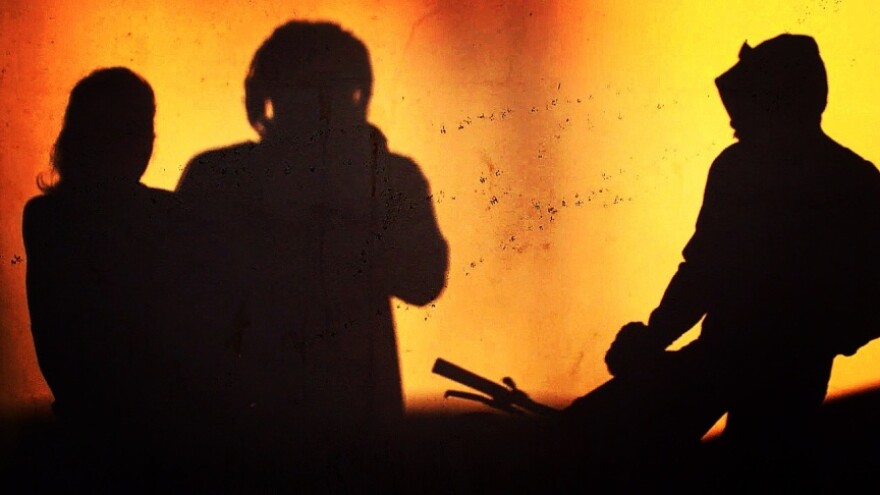
In 2017, a friend of mine gave me an old Sony NEX-3 point-and-shoot camera that she had dug up. It was a decent consumer camera, and I shot a few things with it but I had wanted a camera for documentary filmmaking and the sound quality was so bad I couldn't really do anything with it. I didn't appreciate it for what it was and lack of appreciation, dear readers, will torpedo you every time.
One day, while pushing my shopping cart around, I ran into D-Rock. D-Rock was a musician and when he found out I made films, he kept talking to me about making a documentary about him and his life. He asked me if I could shoot some footage of him. I said OK.
We walked up to his camp in a Melrose Avenue alley. The sound wasn't gonna be very good but I knew it didn't need to be to satisfy D-rock. I shot him in his camp with a steady stream of visitors riding through the alley — stopping, talking, smoking some dope then leaving.
I didn't take anything I was shooting seriously, it was just something to do. After I was done, I didn't see any point in looking at the footage. I knew from a documentary standpoint there was nothing there. Eventually, just to get it off my camera I browsed through it. While none of the footage worked for any kind of "documentary," some of the shots were pretty good. I'm not a photographer or a director of photography but I do know the 12 rules of composition. By following those rules, I was able to capture a few good shots. But they didn't work as video, they worked more as still photography. So I took screenshots from the video and edited them as standalone images. Every once in a while when I ran into D-rock, he would ask me to film him. I would do it, shooting him and anyone who was with him then pulling stills from the footage. At first, I called the photos "Melrose Dogs'' after the Hollywood Dogs. Later, I changed it to "Alley Dogs."
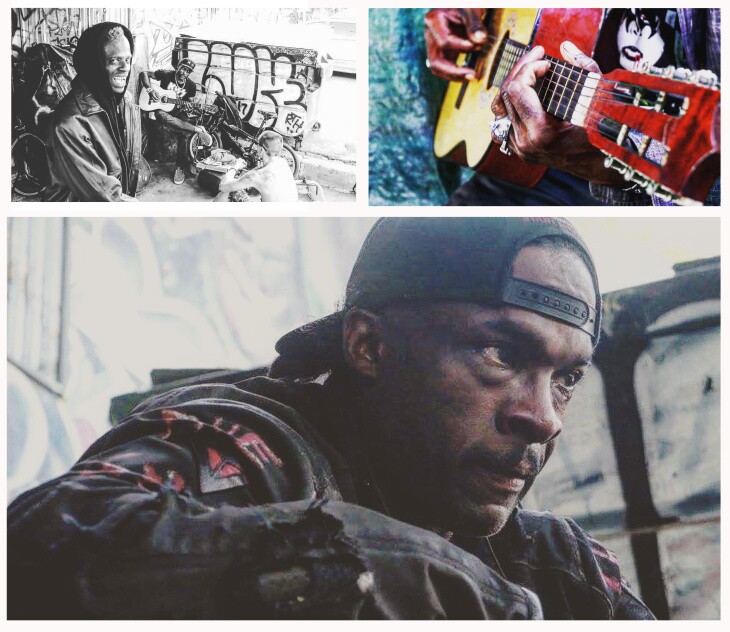
My first shots in the"Alley Dogs'' series were all of D-Rock Deeds. That's actually his legal name, which he has on all his identification cards. He claims it's also his birth name, which I don't believe for a second. D-Rock is one of the "Hollywood Dogs," a clique for whom homelessness and having a home tend to blend into each other so fluidly there is no longer a conscious distinction. They'll squat in a mansion for a couple of years then sleep next to the dumpster they're eating out of for a couple years.


One of my favorite subjects was Michelle.

I took all these photos one day while she was hanging out with D-Rock. Although she doesn't particularly like me taking photos of her, she is unbelievably photogenic. I just couldn't take a bad picture of her.

In some of these photos, she is in the park with D-Rock and her husband, Craig.
At the bottom, I was in Starbucks when she rode by with a t-shirt that said "HOBOSEXUAL." I had to photograph it.

It is, of course, especially difficult for women out on the street, but Jen can more than take care of herself. She's originally from Texas, where she has several grown children. I never learned how she ended up on the streets of Los Angeles.

At one point, she was planning on marrying her boyfriend who was living in the streets with her, but her drug addiction began to slowly eat away at her sanity to the point where even her drug-using fiancée left her.




D-rock is a musician who specializes in rock music. He once told me his name came from the AC/DC song "Dirty Deeds Done Dirt Cheap," which would contradict his claim that he was born with the name.

Everywhere he goes, he usually has several guitars and amps. His possessions can easily weigh several hundred pounds.

When he gets rousted out of a spot by the cops, he often has to move that stuff, load by load, almost a mile to a new camp.

I shot him here during one of those moves.

Here's Memphis playing his trumpet on Fairfax Blvd. I met Memphis back in the late '90s. Back then he was a "fighting drunk." His spot was Fairfax and Beverly where the drunks would — and still do — hang out. The more he drank, the more he liked to argue. Sometimes, he would yell at the cars going by. Once, I saw him chase a car down the alley while he was drunk off his ass.

Memphis eventually sobered up and started playing the trumpet on street corners. He has been doing that for at least 15 years.

Pushing my shopping cart down Beverly Boulevard, I saw a guy in the distance walking toward me. He was dressed like Jesus and carrying a guitar. I said to myself, "Gotta take a photo of this guy, but how do I ask him?" As it turned out, we were staring at each other. When we met in the middle of the sidewalk, we immediately introduced ourselves. He asked me if he could play me a song. I said of course. I asked if I could shoot some photographs while he sang. He said of course. And so began my beautiful friendship with Nolan Silverstein.
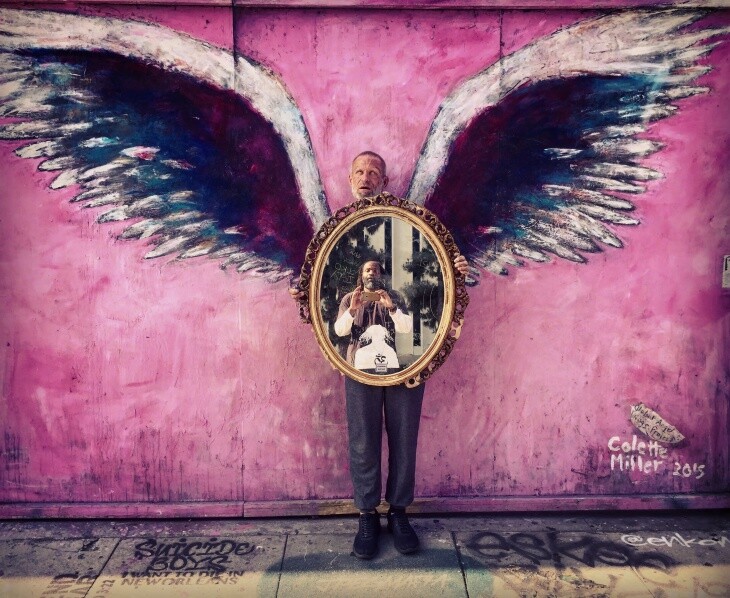
I was standing by Colette Miller's wings on Melrose Avenue when Psycho passed by. He didn't want me to take his picture but I told him I'd give him a couple of bucks and he reluctantly let me. He said he was tired and that he hadn't slept in several days. It showed in his eyes. Last thing I heard about him, he got 25 to life for a third strike offense.
Right down the street from the L.A. Free Clinic on Orlando, Colette also painted some wings on the side of a liquor store. I wanted to bring people from the clinic and take photos of them, one by one. Make it a series called "Angels with Dirty Faces." But after I got two shots, they painted it over. She painted a replacement one across the street but it wasn't as good.
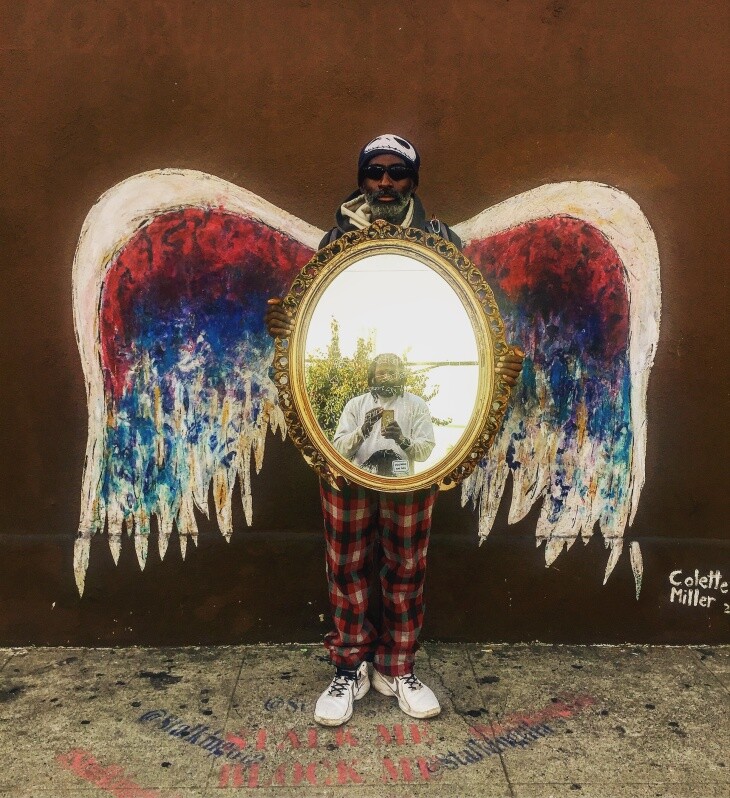
Born and raised in Chicago, Jose was already a child of the streets at the age of 16. During one of those legendary Chi-Town winters, he saw a news report about the 80-degree weather in Los Angeles. He decided then and there if he was gonna run around in the streets, he didn't want to do it in knee-high snow. When I'm walking around with him, he will point out people and tell stories of how he has known them out in the streets over the years. "See that old guy right there? He was on the streets for 20 years already when I met him 40 years ago."
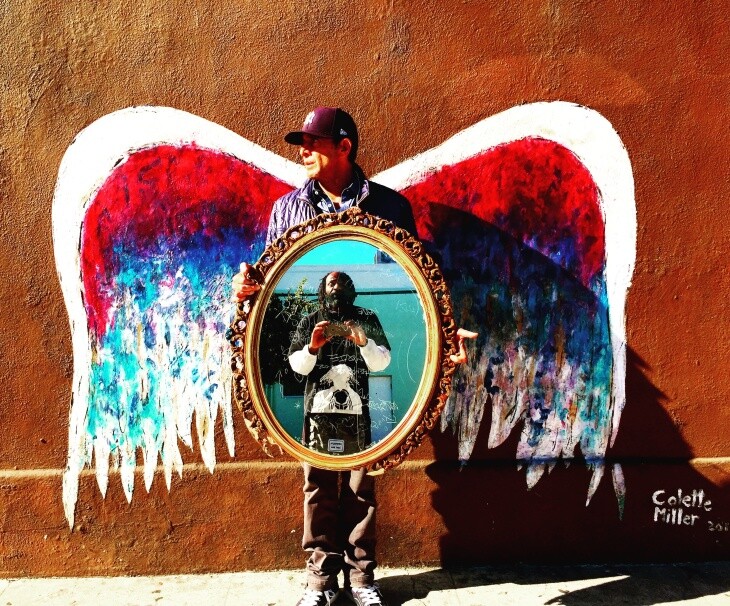
An authentic old school New York Italian street hustler, Anthony will have a wad full of cash one day and be dead broke a few days later. Sometimes, he's carrying bags of high-end clothes worth thousands of dollars then the next time you see him, he's pleading with someone for clean socks and underwear. He once made tons of money as a luxury car salesman and had a house in Beverly Hills with a wife and kid. He also knew perfect Spanish from spending several years in a Mexican prison. Which one came first, the house in Beverly Hills or the years in a Mexican prison? I was never clear on that.

For some reason, the iPhone I was using didn't take good portraits. I could never shoot portraits of people until I started using the Sony NEX-3. I was genuinely shocked at how good the images looked, especially when I could shoot in very bright sunlight. Remember, these are stills pulled from video and most of them are only a few hundred kilobytes.



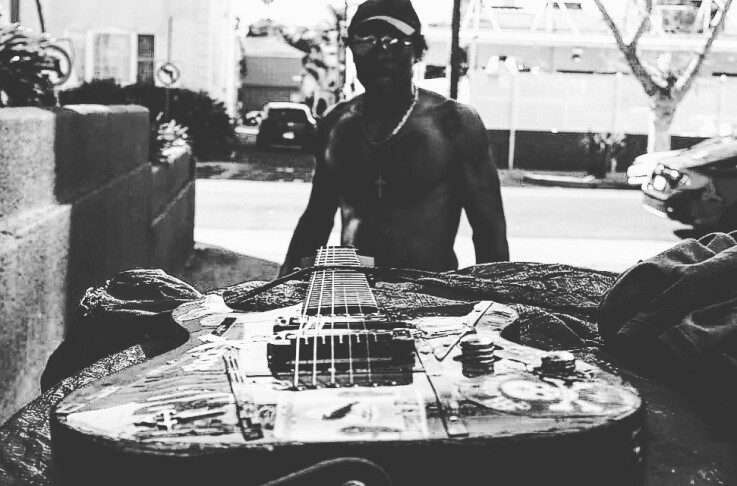
If you like the photographs you see here, you can buy prints of them directly from Bumdog for $10 each. You can also buy DVDs of his two movies for $25 each as well as the custom made T-shirts you see in several of his photographs for $75 each. (All the money goes directly to him.) His Paypal, Venmo and CASH accounts are all under bumdog@gmail.com, where you can also contact him.



